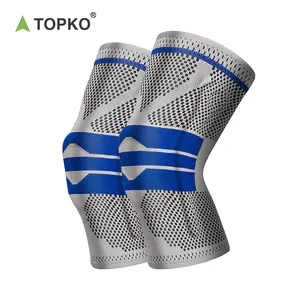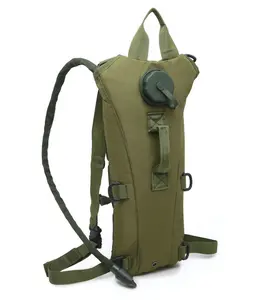Popular in your industry





































































































































































Top categories
About expandable sandbag
An expandable sandbag represents a cutting-edge alternative to conventional sandbags for flood defence. These innovative bags are designed to be featherlight prior to deployment, yet swell and soak up water upon immersion, creating an effective flood barrier. Expandable sandbags eliminate the need for laborious filling associated with traditional sandbags, offering a swift and efficient solution in urgent flood scenarios.
Types and Characteristics of Expandable Sandbags
Expandable sandbags are available in a variety of models, each crafted to meet specific needs and preferences. Certain designs are intended for quick deployment in residential settings, while others are fortified for the more demanding flood protection requirements of industrial environments. For example, the self-expanding jute quick absorbent sandbags are prized for their rapid water absorption and environmentally friendly composition, making them well-suited for immediate use in homes. Conversely, light instant sap self-inflated sandbags, made from synthetic materials, offer enhanced longevity, rendering them apt for sustained industrial use. This assortment ensures a fitting expandable sandbag option for every flood prevention scenario.
Structure and Operation of Expandable Sandbags
The architecture of an expandable sandbag is intricately crafted to maximise efficacy. A robust jute exterior houses a core lined with a superabsorbent polymer. Upon contact with water, this polymer is activated, causing the bag to expand in volume and weight, thereby establishing a solid barricade. The components act in concert: the tough outer layer withstands abrasions and punctures, while the swelling inner polymer multiplies in size, delivering a rapid and dependable flood defence system.
Materials and Properties
The constituents of expandable sandbags are selected for their distinctive attributes. Jute, a resilient and renewable natural fibre, is commonly employed for the outer shell due to its biodegradability and robustness. The core's superabsorbent polymer is chosen for its exceptional capacity to soak up water, a pivotal feature during flooding. These materials not only excel in flood management but also enhance the product's sustainability, positioning them as an environmentally responsible option.
Business Usages and Applications
Within the commercial sphere, expandable sandbags are indispensable across sectors such as construction, landscaping, and property management. They serve to shield construction sites from water damage, protect landscape designs amid torrential downpours, and defend commercial properties from floodwaters. These sandbags have become essential tools for business emergency responses, averting costly damages and operational interruptions. Their ease of deployment enables businesses to maintain continuity with minimal disruption.
Functions and Tasks
The fundamental role of an expandable sandbag is to act as a bulwark against rising floodwaters. It is engineered to soak up and confine copious amounts of water, morphing from a compact, manageable package to a full-sized barrier within moments. This swift transformation is crucial for emergency flood control operations, where immediacy is paramount and constructing traditional sandbag barriers would be too time-consuming.
Features and Unique Selling Points
A hallmark of the expandable sandbag is its self-activating capability. These sandbags are ingeniously designed to swell upon water exposure, obviating the need for manual filling. Moreover, their compact pre-activation size and portability confer significant logistical advantages for businesses and emergency teams that need to respond promptly.
Benefits and Positive Outcomes
The advantages of employing expandable sandbags are manifold. They offer instant flood protection, are straightforward to deploy, and necessitate no specialised equipment or training. Users benefit from a rapid and effective disaster response, conserving both time and resources on flood prevention measures. The outcomes include diminished property damage risks, reduced labour expenses, and heightened security during extreme weather conditions.
How to Use Expandable Sandbags Effectively
To utilise an expandable sandbag effectively, strategically position them around the perimeter of the area requiring protection. Aim for a smooth underlying surface to minimise water seepage through crevices. Once in place, the bags will absorb water and swell, forming a robust barrier. For optimal performance, it is advisable to stagger the bags and construct a tiered wall, akin to bricklaying, for reinforced stability and defence.
Choosing the Right Expandable Sandbag
Choosing the appropriate expandable sandbag entails evaluating the specific demands of the situation. Take into account the anticipated volume of water, the area needing protection, and the intended duration of use. For ephemeral protection in mild to moderate flood conditions, a standard absorbent sandbag may be adequate. For more severe or prolonged scenarios, opt for a bag that offers greater durability and capacity. Always opt for a reputable brand that provides transparent instructions and product specifications.
Maintenance and Storage Guidelines
Proper maintenance of expandable sandbags is essential to ensure their longevity and functionality. When not in use, store them in a cool, dry environment away from sunlight to avert premature deterioration. Post-use, if the bags are to be reused, they should be thoroughly dried before storage. Regular inspections for wear and tear are recommended, and timely replacements should be made to maintain an effective arsenal of flood defence tools.
Environmental Impact and Disposal
The environmental ramifications of using expandable sandbags are largely beneficial, particularly when contrasted with traditional sandbags. Their more efficient transportability translates to lower carbon emissions from logistics. Additionally, the materials are often biodegradable or recyclable, reducing environmental footprints. Nonetheless, appropriate disposal is imperative to ensure ecological safety.
Reuse and Lifecycle Management
Although expandable sandbags are generally intended for a single use, particularly in severe flood events, some may be dried and reused if they remain undamaged. Post-use integrity assessments are crucial to determine their suitability for another use. Adherence to the manufacturer's guidelines for reuse and disposal is always recommended.
Cost-Effectiveness and Economic Considerations
In terms of cost-effectiveness, expandable sandbags might present a higher upfront cost compared to traditional sandbags. However, when factoring in the savings on labour and time for filling and deployment, expandable sandbags can prove to be more economical in the long run. They offer a rapid deployment solution that is vital in averting flood damage, which can significantly offset the initial outlay.


































